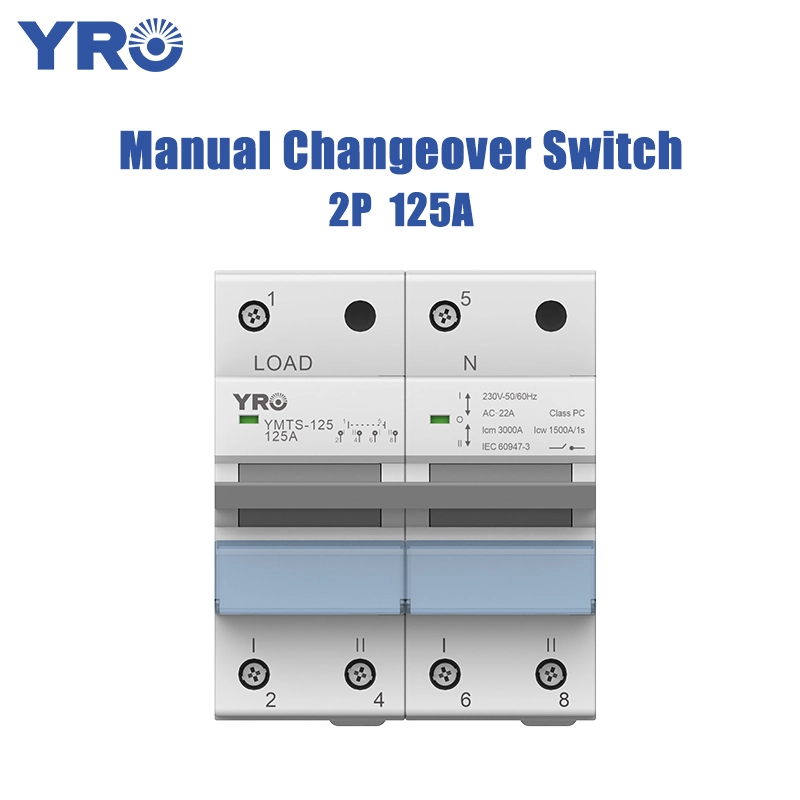Is a mandatory isolation distance required when installing a 2P 125A manual changeover switch?
In electrical installations, 2P 125A manual changeover switches are critical equipment, often used in power switching scenarios such as backup generators or dual-mains systems to provide reliable power. When installing these switches, whether safety regulations require a mandatory isolation distance is a key issue. Isolation distance refers to the minimum physical distance around the device to prevent fire and electric shock risks from arcing, overheating, or accidental contact. For 2P 125A manual transfer switches, this distance is not optional but mandatory, based on strict regulations in international standards such as IEC 60947 and the NEC. These regulations ensure that the switch remains stable under high-voltage and high-current operating conditions (125 amperes), preventing failures caused by heat buildup or mechanical interference, thereby protecting personnel and property.
Specifically, the need for mandatory isolation distance stems from the design characteristics of 2P 125A manual transfer switches. Their double-pole structure is prone to heat and sparking under high load operation. Safety standards require adequate spacing during installation, such as a minimum distance from walls, other equipment, or grounding conductors. This distance typically ranges from 10 to 30 cm, depending on manufacturer guidelines and environmental conditions. This requirement not only facilitates heat dissipation and arc control but also facilitates maintenance operations and reduces the risk of accidental contact. Ignoring isolation spacing can lead to degraded switch performance or fault propagation, potentially triggering a chain reaction. Therefore, during installation, technicians must adhere to relevant electrical codes and implement mandatory isolation through measurement and planning to ensure the safe operation of 2P 125A manual changeover switches within enclosures or panels.
In short, mandatory isolation spacing is an essential practice when installing 2P 125A manual changeover switches, directly impacting system reliability and personal protection. This principle emphasizes the universality of electrical safety: spacing specifications should be prioritized for any high-current device. Strictly adhering to these rules not only complies with regulations but also extends equipment life and avoids potential hazards. Ultimately, during the design or implementation process, engineers should consult specific standards and conduct testing to ensure that the spacing settings of the 2P 125A manual transfer switches are impeccable, building a solid line of defense for the electrical system.





